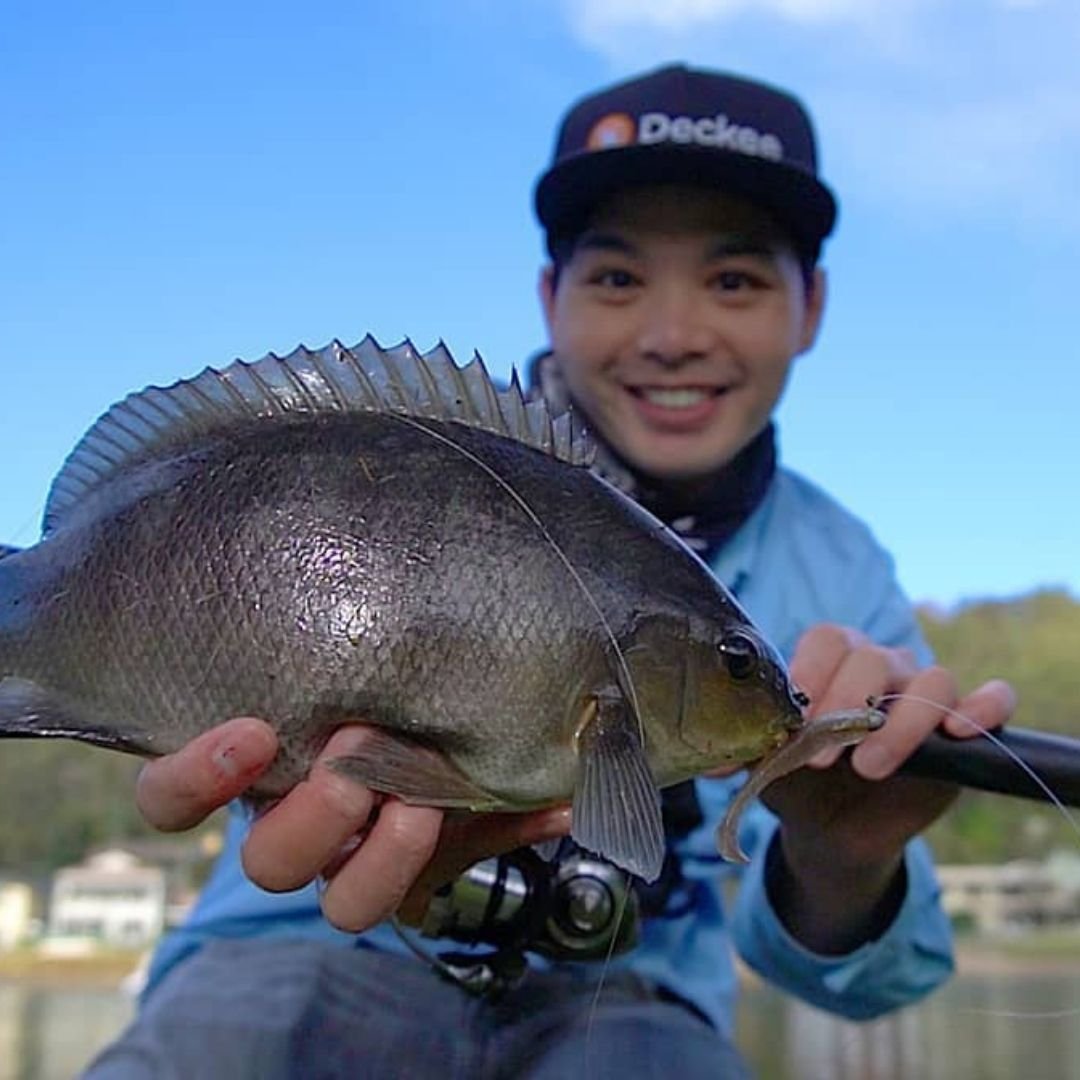HOW TO USE SOFT PLASTIC LURES
In terms of versatility and variety, there is no better option than using soft plastic lures when fishing. That is why soft plastics are so widely used and loved by many anglers.
There are things you need to know about soft plastics so you can use them to your advantage.
Deckee ambassador Peter “Shroom” Phung sees fishing with soft plastics as another form of fishing, as opposed to fishing with live bait. Fishing with soft plastics is popular because the lures come in various shapes, colours, and can be used in just about any waterway.
“You can apply soft plastic lures to practically any style of fishing, and that choice is entirely up to you. On the market now there is a plastic to suit any need, whether you are fishing in deep water, shallow water, different water conditions or different areas.”
THE VERSATILITY OF USING SOFT PLASTICS
“There is a plastic out there to match pretty much any aquatic critter that can help attract any fish you are trying to catch,” says Shroom. “These days, most soft plastics feature some kind of a movable appendage, like a wriggler tail, that will make it look realistic when moving in the water.”
A big advantage of soft plastic is mobility, and a lot of ground can be covered. You can expose your presentation to more of the water column and different types of fish. Some fish like chasing a quick-moving lure, and you can modify your soft plastic to attract fish in a certain situation.
“Fish like salmon, kingfish and tailor in particular are attracted to a quick-moving soft plastic lure,” says Shroom. “When these fish are busting up you are able to get a soft plastic in there more effectively than bait.”
SOFT PLASTICS ARE AFFORDABLE
“I will use soft plastics in 90 percent of my videos, it is the most versatile type of lure fishing, and they are not too expensive,” says Shroom. “You can get a pack for 10$, and it allows you to have as many goes as you want.”
Using soft plastics means you don't need to carry around a huge amount of equipment or gear with you, and if you are lucky you can reuse them a couple of times over.
Unlike real bait that you need to store in a cooler, you can just toss plastic lures into your tackle box and they won't get messy or smelly.
THE CHALLENGE OF USING SOFT PLASTICS
“In general, most people would find bait fishing more accessible and easier to catch a target species than using soft plastics. However, there are some circumstances where a soft plastic in the right conditions will outperform a bait,” notes Shroom.
Soft plastic lures have to be rigged in the right way to work effectively. To get your plastic lure to look totally lifelike and catch any fish, it needs to be threaded onto the hook straight and without any contortions, and be free to wiggle around. To some inexperienced anglers at least, rigging soft plastics still presents a challenge.
Commonly, there are two ways to rig soft plastic – standard and weedless.
USING JIG HEADS WITH SOFT PLASTIC LURES
These soft plastics need to be rigged onto a hook, and Jig Heads provides the hook and the necessary weight for casting and enabling the soft plastic to sink to the bottom of the sea floor. There are numerous styles, weights and hook sizes to choose from.
A braided line is also important. It allows you to cast much further, and because it doesn't have much stretch, any bite on the line is more detectable.
CHOOSING THE RIGHT ROD AND REEL
Because soft plastics cover the whole spectrum of fishing, in all conditions, from inshore, to freshwater, off the rocks or off the side of the boat, for the average angler who will go out fishing for the weekend, it is important to consider what rod and reel setup is suitable.
The right rod and reel combo is needed depending on the water systems you're fishing in and the species of fish you’re planning to target.
Consider factors like the target species, how deep the water is likely to be, how strong the current is, and the location of the waterway.
In general, a light set-up is recommended.
“A light line in the range of 2-4 kg rod with a 2000 size reel will cover you for 90 percent of the angling opportunities you will encounter while using soft plastics,” recommends Shroom.
If you head offshore to target larger fish such as Mulloway or Trevally then you would need something heavier.
GET OUT THERE AND FISH
“It is a rewarding way to fish, and when you finally get a catch it feels like a big win,” says Shroom. “You are always on the move, trying to find the best spot. You are always exploring new waters, and seeing new things and new sights out in nature.”
You can find the best locations and weather conditions by checking in the Deckee app for the best spots. If there is a spot you want to share, simply create a marker and share some details.
Above all, practice is the key to fishing with soft plastic lures and over time you will get more comfortable using your gear.
Download the Deckee app from the App Store or Google Play for free to stay safe on the water. Check the marine weather forecast, track your boat trips, inspect Aids to Navigation, and more. Join our community of passionate boaters to find and share your favourite anchorages, marinas, or fishing spots.



